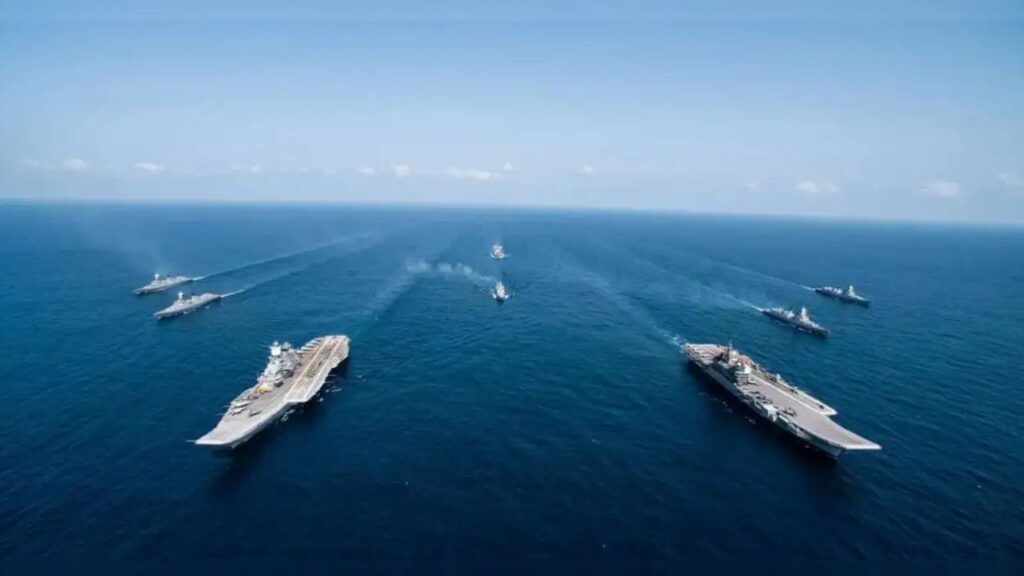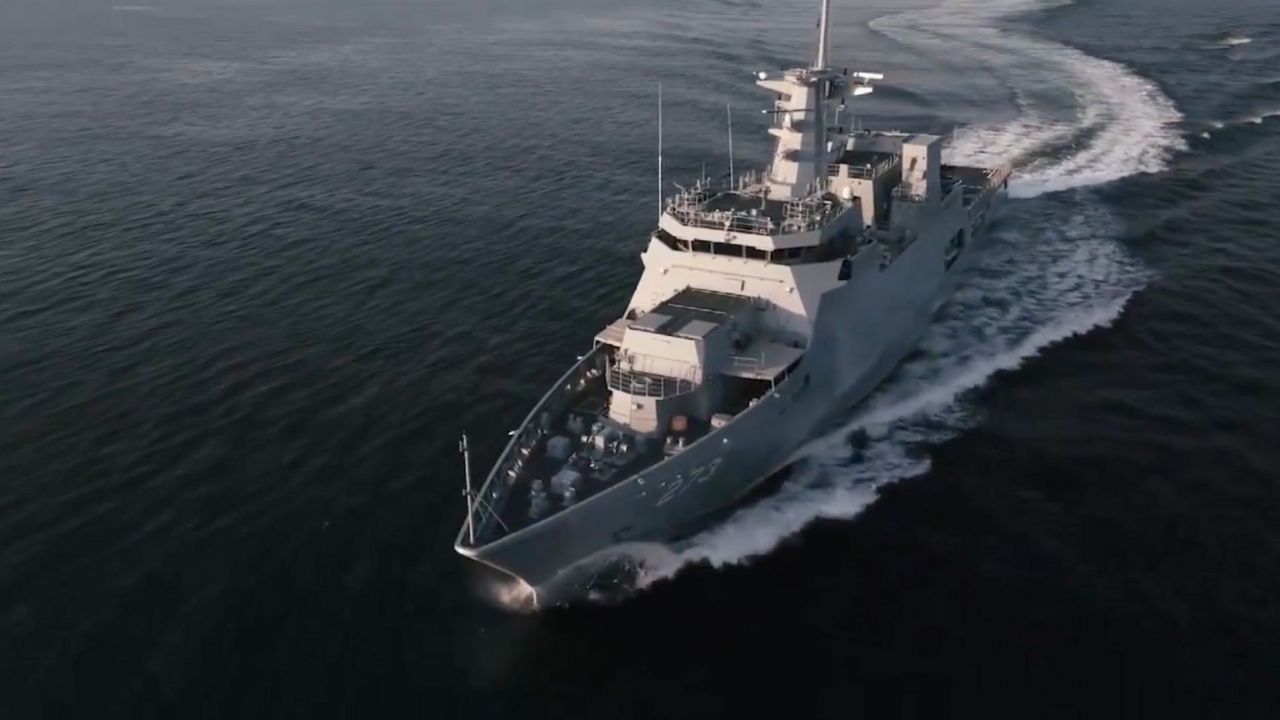Pakistan faces a critical $4.6 billion annual hard currency outflow for sea freight services, with 90% of the country’s trade flowing through maritime routes. This massive expense has prompted the Government of Pakistan to embark on an ambitious expansion of the Pakistan National Shipping Corporation (PNSC), targeting a fleet increase from just nine ocean-going vessels in 2015 to 60 ships by 2028-2029. This dramatic 6X-plus growth in merchant capacity is now forcing the Pakistan Navy to significantly expand its offshore patrol vessel (OPV) fleet to protect vital sea lanes and the burgeoning commercial maritime assets.

The Economic Imperative Behind Fleet Expansion
Pakistan’s dependence on maritime trade creates both opportunity and vulnerability. According to government officials, approximately 90% of Pakistan’s international trade transits through sea routes, making maritime security absolutely critical for the nation’s economic survival and export capabilities. The annual $4.6 billion freight bill represents a substantial drain on Pakistan’s foreign exchange reserves, money that leaves the national economy to pay foreign shipping companies.
By expanding the PNSC fleet, Pakistan aims to reduce this hemorrhage of hard currency while simultaneously creating a domestic maritime industry that generates employment and retains trade revenues within the country. The National Maritime Policy 2025 has set an ambitious goal of increasing Pakistan’s merchant fleet share from 12% to 30% by 2047, positioning the country as a significant regional maritime player.
Pakistan’s Merchant Fleet Growth Timeline
The expansion trajectory demonstrates Pakistan’s commitment to maritime self-sufficiency:
2015 Baseline:
Pakistan National Shipping Corporation operated only nine ocean-going vessels, representing minimal participation in its own maritime trade.
2019 Milestone:
Induction of two Aframax oil tankers marked the beginning of serious fleet modernization.
2024 Acceleration:
Government leased three ships for $139 million, signaling aggressive expansion plans.
2026 Target:
PNSC fleet planned to reach 30 vessels, representing more than 3X growth from 2015.
2028-2029 Goal:
Fleet expansion to 60 vessels, achieving a 6X-plus increase over 15 years, with potential involvement from Pakistani private freight companies alongside PNSC.
This rapid expansion fundamentally changes Pakistan’s maritime security calculus, as the navy must now protect not only foreign-flagged vessels carrying Pakistani goods but also a substantial nationally-owned merchant fleet operating across global trade routes.
Why Patrol Vessels Are Critical
The Pakistan Navy faces a two-fold security challenge created by the merchant fleet expansion. First, protecting the sea lanes through which 90% of national trade flows remains paramount. Second, and increasingly important, most of that trade may soon be managed by PNSC vessels and Pakistani private freight companies, making these ships strategic national assets requiring dedicated protection.
Offshore patrol vessels serve as the backbone of maritime security operations because they offer:
- Cost-Effectiveness: OPVs are significantly less expensive to procure and operate than frigates or corvettes, making them ideal for extended patrol missions
- Operational Flexibility: Capable of anti-piracy operations, counter-narcotics missions, fishery protection, and search-and-rescue
- Extended Endurance: Designed for long-duration patrols covering vast maritime zones
- Multi-Mission Capability: Equipped for law enforcement, surveillance, and limited combat scenarios
A recent example illustrates the OPV’s value proposition: Pakistan Navy’s PNS Aslat executed a massive $972.4 million drug bust, demonstrating how a $100 million vessel can deliver extraordinary returns while freeing more expensive frigates and corvettes to focus on core naval warfare capabilities.
Pakistan Navy’s OPV Acquisition Strategy
The Pakistan Navy has pursued a methodical OPV procurement program centered on the Damen-built vessels:
Initial Fleet (2020-2022):
- Two Yarmouk-class Damen OPV 2200 vessels providing baseline capability
- Establishment of operational doctrine for patrol vessel employment
Current Expansion (2022-Present):
- Two Damen OPV 2600 vessels contracted in 2022, offering larger tonnage and enhanced capabilities
- Four additional OPVs inducted as Batch-II vessels, including PNS Yamama commissioned in February 2025
Future Plans:
According to 2020 statements by Pakistan Navy leadership, plans called for adding six OPVs of “larger tonnage” to the existing fleet. Based on the two OPV 2600s already contracted, analysts estimate the Pakistan Navy could potentially acquire four additional OPVs, bringing the total fleet to eight dedicated patrol vessels.
Advanced Capabilities of Modern OPVs
The latest offshore patrol vessels inducted into Pakistan Navy service feature sophisticated capabilities that enable effective maritime security operations
Stealth Features:
Modern hull design and radar cross-section reduction enable covert operations and reduced detectability.
Sophisticated Weapons Systems:
Integration of naval guns, close-in weapon systems, and potentially anti-ship missiles for self-defense and limited offensive operations.
Multi-Threat Environment Operations:
Advanced sensors, communications, and electronic warfare systems allow functioning in contested maritime zones.
Enhanced Endurance:
Extended range and sea-keeping capabilities for prolonged patrols across Pakistan’s exclusive economic zone and beyond.
These capabilities significantly enhance the Pakistan Navy’s ability to ensure seaward defense, protect sea lines of communication, maintain order at sea, and safeguard maritime infrastructure including China-Pakistan Economic Corridor (CPEC) facilities.

Regional Maritime Security Patrol Initiative
Beyond protecting Pakistani merchant vessels, the Pakistan Navy has developed an independent “regional maritime security patrol” program covering sea lanes connecting Pakistan to key trading partners such as Bahrain and other Gulf states. This initiative demonstrates Pakistan’s growing confidence in projecting maritime security beyond its immediate territorial waters.
The OPV fleet expansion enables the Pakistan Navy to sustain these regional patrols while maintaining adequate coverage of national waters, contributing to Combined Task Force 150 and 151 counter-piracy operations without compromising core national security requirements.
Integration with Broader Naval Modernization
The OPV acquisition forms part of a comprehensive Pakistan Navy modernization program spanning multiple vessel classes:
Submarine Fleet:
Eight Chinese Hangor-class diesel-electric submarines being acquired under a $5-6.5 billion deal, with first delivery expected in 2026.
Surface Combatants:
- Type 054 A/P frigates from China already inducted
- MILGEM-class corvettes from Turkey under construction
- Babur-class corvettes and Tughril-class frigates for high-end naval warfare
Infrastructure Development:
Major investment in a new naval shipyard at Gwadar and expansion of facilities at Port Qasim to support domestic shipbuilding and repair capabilities.
The Pakistan Navy plans to operate a fleet of 50 modern ships within the next decade, including frigates, submarines, corvettes, and offshore patrol vessels. The OPVs fulfill the critical middle layer of this force structure, handling maritime security and constabulary missions while allowing high-value combatants to focus on deterrence and warfighting.
Strategic Implications and Challenges
The merchant fleet expansion and corresponding naval buildup carry significant strategic implications:
Economic Security:
Reducing foreign freight dependency strengthens economic sovereignty and protects against potential maritime blockades or trade disruptions.
Naval Force Structure:
The balanced fleet approach combining high-end combatants with numerous patrol vessels creates a sustainable, cost-effective maritime security architecture.
Regional Dynamics:
Pakistan’s growing maritime capability affects regional power balance, particularly vis-à-vis India, while also enabling constructive contributions to multinational maritime security efforts.
CPEC Protection:
Safeguarding Chinese investments and trade routes through Pakistani waters remains a critical mission driving force modernization.
Frequently Asked Questions (FAQs)
Q1: Why is Pakistan expanding its merchant navy fleet?
Pakistan spends $4.6 billion annually in hard currency for foreign sea freight services, with 90% of trade flowing through maritime routes. The government is expanding Pakistan National Shipping Corporation from 9 vessels in 2015 to 60 by 2029 to reduce this outflow and retain trade revenues domestically.
Q2: How many patrol vessels will Pakistan Navy acquire?
Pakistan Navy has inducted four Damen-built offshore patrol vessels and contracted two OPV 2600s. Based on 2020 statements about acquiring six additional OPVs of larger tonnage, analysts estimate the fleet could expand to eight dedicated patrol vessels beyond the existing fleet.
Q3: What capabilities do Pakistan’s new patrol vessels offer?
Modern offshore patrol vessels feature advanced stealth characteristics, sophisticated weapons systems, multi-threat environment operations capability, extended endurance for long-duration patrols, comprehensive sensors and communications, and ability to conduct anti-piracy, counter-narcotics, surveillance, and limited combat missions.
Q4: Why are patrol vessels more suitable than frigates for merchant fleet protection?
Patrol vessels cost significantly less to procure and operate than frigates or corvettes while offering adequate capability for maritime security missions. This cost-effectiveness allows sustained patrol coverage across vast maritime zones, freeing expensive combatants for high-end naval warfare while still protecting commercial vessels and sea lanes.
Q5: How does merchant fleet expansion affect Pakistan Navy strategy?
The 6X expansion from 9 to 60 merchant vessels by 2029 creates two critical requirements: protecting sea lanes carrying 90% of Pakistan’s trade and safeguarding nationally-owned merchant ships as strategic assets. This necessitates expanding the offshore patrol vessel fleet beyond initial plans to ensure comprehensive maritime security coverage.








